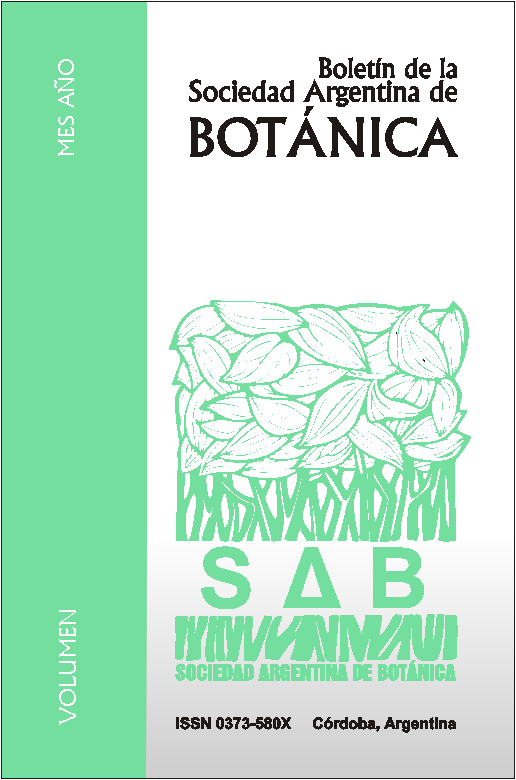Regeneration of Sebastiania commersoniana (Euphorbiaceae) in relation to livestock and distance from forest in the mountains of central Argentina.
DOI:
https://doi.org/10.31055/1851.2372.v53.n3.21314Keywords:
Degradation, herbivory, native forests, regeneration niche, seedling.Abstract
Regeneration of Sebastiania commersoniana (Euphorbiaceae) in relation to livestock and distance from forest in the mountains of central Argentina. Understanding the regeneration requirements of native woody species is important to guide forest conservation and restoration activities. We evaluated the regeneration niche of Sebastiania commersoniana in relation to vegetation, soil and light comparing microsites with and without seedling in two paddocks with high and low livestock density and at three distances from the edges of forest patches dominated by the species: -2 m (inside the forest), 1 m and 3 m (outside the forest). We also analyzed seedling density and proportion of browsed stems. The seedlings were found in microsites with abundant herbaceous vegetation and low soil compaction. Seedling density was 134 % higher with low livestock density than with high livestock density outside the forest, showing no difference inside, and decreased abruptly with increasing distance from forest edge. The proportion of browsed stems was 13 times higher with high livestock density than with low livestock density. We conclude that establishment may be favored at microsites with conserved vegetation and soil; that seedling recruitment may be restricted to the forest patches proximity; and that reduction of livestock density may promote regeneration of S. commersoniana.
Downloads
Published
Issue
Section
License
Provides immediate and free OPEN ACCESS to its content under the principle of making research freely available to the public, which fosters a greater exchange of global knowledge, allowing authors to maintain their copyright without restrictions.
Material published in Bol. Soc. Argent. Bot. is distributed under a Creative Commons Attribution-NonCommercial-ShareAlike 4.0 International license.





